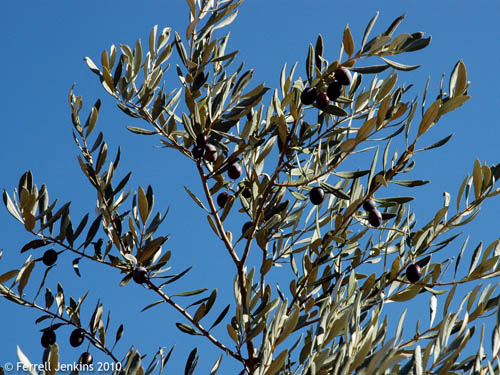When I was a kid growing up in the 1980s, I always
imagined Israel looked exactly like the pictures in the children’s Bibles. I
thought that it probably still looked like that even in 1986. I figured there
were still low-lying trees and a lot of rocks and the people wandered around in
sandals and their mother’s sheets. (Well, that’s how we dressed for the
Christmas plays, and I figured it was probably like that there, too. I was six
years old growing up in rural Indiana.) But as I got older, and I saw images of
modern Israelis running through streets trying to hide from gunfire, grenades,
and bombs; I realized they wore jeans and regular clothes just like most other
people did. But it took a long time to figure out why almost every time Israel
was in the news here, it was for something bad. (One time, I turned on Anthony
Bourdain’s new show Parts Unknown to
see him talking about food in Israel, the West Bank, and Gaza. It was a nice
change.)
The land where the country of Israel is has been
known by many names in its long history. Officially, it’s known as the State of
Israel, but in the past it has also been known as Judea, Eretz Israel (“Land of
Israel”), Zion, Samaria, Southern Syria, Canaan, Syria-Palaestina, among
others. The name “Israel,” meaning “struggles with God,” is attributed to its
patriarch Jacob. It was his sons who were named the “Twelve Tribes of Israel”
or sometimes the “Children of Israel.”
Israel lies on the eastern side of the
Mediterranean Sea, bordered by Lebanon and Syria to the north, Jordan to the
east, and the Egyptian Sinai Peninsula to the southwest. It also has a very
short coast along the Gulf of Aqaba, which empties into the Red Sea. This area is sometimes referred to as the Levant. There are
also three disputed areas within Israel (I’m sure you’ve heard these mentioned
before): the Gaza Strip (a small section along the Mediterranean coast
bordering Egypt), the Golan Heights (a small area in the north bordering Syria
and Lebanon), and the West Bank (a large area east of Jerusalem and extending
to the Syrian border). Israel’s landscape varies between mountainous to some
forest areas to desert to coastal areas. The Sea of Galilee, the lowest
freshwater lake in the world, is a large lake often mentioned in the Bible as
well as the Dead Sea. The Dead Sea is a popular tourist destination because of
the “healing powers” of its salinity, and it’s also the lowest point on earth. The
Negev Desert in the southern region actually takes up nearly 60% of the country,
but only 8% of the population lives there.
 |
| Sea of Galilee |
Israel is the setting for many Biblical stories, so
people have been there for thousands of years. There were many villages around
the land, mostly supporting themselves by farming and herding animals. It seems
to me that the country of Israel is one of those countries where everyone was
trying to grab a piece of this area. It has been part of many other empires,
including the Persians, the Greeks, the Hasmoneans, the Roman Empire, the
Byzantines, the Arabs, Crusaders, Seljuks, and the Ottoman Empire. After the
British defeated the Ottoman Empire, they divided up much of their territory
between themselves and France; the British placed the Judean area (now Israel)
under a mandate called Mandatory Palestine (Geez, could they find a less
flattering name? Why didn’t they follow suit as their other territories,
colonies, and mandates? I mean, British Judea would’ve sounded better.). During
this time, many of the Jewish people here left the country for Europe, the
United States, Canada, and other areas in the Middle East. When WWII was
finally over, British then found itself at violent odds against the Jewish
people here, and to an extent, the Arab community as well. However, at the same
time, there were thousands of Holocaust survivors trying to come back to Israel
amid the tensions. In 1948, David Ben-Gurion declared Israel’s independence as
a Jewish state. Israel’s independence was not an easy thing to establish. Pretty
much from the get-go, they were almost immediately thrown into more conflict
with several Arab countries over the establishment of a Jewish state.
Afterwards, Gaza was annexed to Egypt, and the West Bank was annexed to Jordan.
During the 1950s, Egypt banned Israel shipping lines from using the Suez Canal,
a major waterway allowing ships to travel from the Mediterranean Sea to the
Dead Sea, which leads to the Arabian Sea. The Six Days War of 1967 led to the
taking of the Golan Heights. There were many Israeli athletes killed during an
attack at the 1972 Summer Olympics in Munich. Since then, there have been more conflicts between the same combatants
as well as many attempts at peaceful interventions.
.jpg) |
| Famous Western Wall in Jerusalem |
The de facto capital is Jerusalem, one of the
oldest cities in the world—and one of the holiest. It’s an important city in
three major religions in this area: Judaism, Islam, and Christianity. It’s a
resilient city, surviving over 121 incidents of sieges, attacks, complete
devastation, and capture/recaptures. While it is often listed as the capital of
Israel, this is disputed between Israel and Palestine (which operates parts of
the West Bank and Gaza Strip). The city lays on a plateau that is part of the
Judean Mountains. It’s not far from the Mount of Olives and Mount Scopus.
Jerusalem is known for being divided into quarters based on demographics: the Muslim
Quarter, the Armenian Quarter, the Jewish Quarter, and the Christian Quarter.
Despite uprisings and conflicts, many people still flock to Jerusalem as a
cultural and religious center. It’s host to first-rate museums, theatres,
universities, stadiums, business centers and markets, parks, and other
attractions. American actress Natalie Portman was born in Jerusalem.
Israel is one of the most economically advanced
countries in its region. It has the second-largest number of start-ups (the
United States is the largest), and outside of the US, Israel has the largest
number of companies listed on the NASDAQ. Much of this is due to the types of
commerce it specializes in: pharmaceuticals, medical equipment, software and
electronics technology, rough and cut diamonds, fuels, and military
technology/equipment. Israel also has a highly developed agricultural sector as
well, exporting products such as grains, beef, fruits, and nuts. Israel is a
huge center for science- and technology-based industries, and the country has
wrapped its arms around solar energy (must be nice). They are also one of the
world’s leading countries in terms of water conservation (California, you might
want to talk to Israel about this).
Israel is the only country in the world that has a
Jewish majority. And while that is true, as I mentioned earlier, this country
is also a center for many other religions. Judaism itself has different
denominations (or maybe more like levels of how “Jewish” you are, perhaps?)
like Haredi Jews, Religious Zionists, secular Jews, or traditional Jews. There
is also a large Muslim population in Israel as well along with smaller
populations of Christians, Bahá’ís, Buddhists, and Hindus.
 |
| Shalom = Hello |
Officially, there are two main languages spoken and
used in Israel: Hebrew and Arabic (Hebrew being the majority language). Many
Israelis speak and understand English because of its international role; school
children study English from an early age. Because Israel is a haven for many
immigrants from Russia, Ethiopia, and Northern Africa, you’ll also find pockets
of Russian, Amharic, and French speakers throughout Israel (mostly in the urban
areas).
 |
| Olive tree, an important part of their cuisine |
The thing about Israel is that they are at the top
or nearly at the top of things I think would surprise a lot of people. Israel
is home to many technology companies’ research and development centers, such as
Motorola and Cisco. There has been many program developments and inventions produced
in Israel: cell phones, voice mail (actually, I think this is the worst
invention ever, next to speaker phone), anti-virus software, and computer
processors. Israeli paper money has Braille on it so that blind people can
identify which bills they have. They were also the first country to adopt the
Kimberly Process, which is a process of determining that diamonds came from
conflict-free zones. Israel also publishes more books (per capita) than any
other country, but that’s not all: they also have more home computers, museums,
orchestras, media coverage, cancer survivors, in-vitro fertilization (and it’s
free!), immigrants, ratio of university degrees, engineers, scientists, PhD
degree holders, physicians, the largest consumers of fruits and veggies, and producers
of milk per capital in the world. It
certainly has a lot to be proud of. So, let’s delve into Israeli culture while
we wait to eat!
Up next: art and literature
.jpg)









